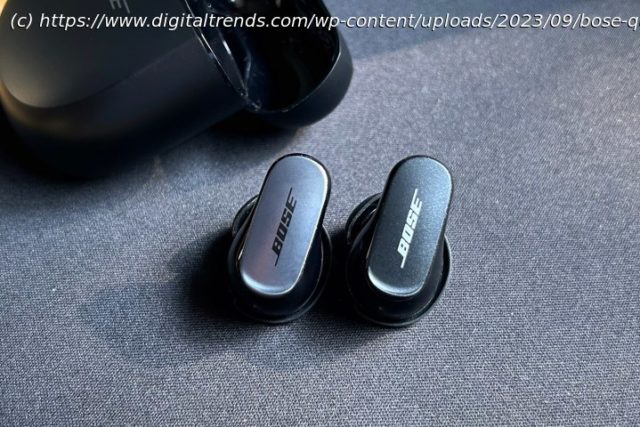A handful of audio upgrades make the Bose QuietComfort Ultra Earbuds worth a look.
Every now and then, we take a break from our ongoing coverage of new products to take a second look at a previously reviewed product — like the Bose QuietComfort Ultra Earbuds.
I originally published this review in March 2023. Since then, two things have changed. First, I’ve been doing a fair amount of air travel. Getting on a plane is the perfect opportunity to test active noise cancellation (ANC), so I alway bring the earbuds or headphones that I’m currently testing. When you test, you need a point of comparison, so the QuietComfort Ultra Earbuds have been coming along for the ride. That’s given me more time with these buds than I had before I wrote the first version of this review.
Second, Bose released a firmware update that gave the QuietComfort Ultra Earbuds Bluetooth multipoint, a feature that was missing when the buds launched. I firmly believe that multipoint is must-have. I don’t know anyone who only uses their earbuds with just their phone and never with a laptop or tablet.
What follows is more or less what I originally said in 2023 — the QuietComfort Ultra Earbuds are still some of the best wireless earbuds you can buy — but with a year’s worth of new perspectives.Bose QuietComfort Ultra Earbuds: design
The Bose QuietComfort Ultra Earbuds and their predecessors, the QuietComfort Earbuds II (QCE II), are almost identical from a design standpoint. That’s a very good thing. Though not quite as small and sleek as the Apple AirPods Pro 2, the Ultra look great, whether in black (seen here) or in white. Bose has given the Ultra a fresh coat of paint — literally — a new metallic layer adorns the main touch control surface, giving the buds a decidedly upscale look.
Bose has made a tiny change to the stability bands — the silicone loops that wrap around the body of the earbud to help them stay anchored in your ear. They now have a tab-and-notch design that ensures they sit correctly on the earbud when you swap them for a different size. You still get three sizes of bands (and three sizes of oval eartips) to work with.
The charging case also is unchanged, save for a more prominent Bose logo. That’s not such a good thing. Overall, it’s still a good design and way more pocketable than the monster box that housed the original QuietComfort Earbuds. But the case lid doesn’t snap closed with the kind of authority you’d expect from a top-tier product. The magnets aren’t quite as strong as I’d like. When the lid is closed, it has a surprising amount of flex at the hinge, giving it a bit of a low-quality feel.
But the biggest disappointment is the continued lack of wireless charging, something that was conspicuously absent from the QCE II and that I’d hoped Bose would address on the Ultra.
It’s not that you can’t use the Ultra with a Qi-compatible charger; it’s that to do so, you’ll need to buy the $49 Bose Wireless Charging Case Cover. The cover works, but it adds a fair bit of bulk to the earbuds. Plus you’re now at $348 just to have a feature that is nearly ubiquitous on earbuds that cost less than $100.Bose QuietComfort Ultra Earbuds: comfort and controls
I find the QC Ultra Earbuds, like their predecessors, very comfortable to wear even for long periods. The portion that sits in your concha is relatively small, and the combination of the smooth, rounded surfaces and the silicone eartips and stability bands make for a very ergonomic shape.
Unlike the AirPods Pro, which I find have a tendency to work themselves loose over time, I hardly ever felt the need to adjust the QC Ultras. For me, they were more than stable enough for my gym regimen, but I don’t do a ton of high-impact exercises. High-mileage runners and CrossFit enthusiasts may still prefer an earhook-based design.
I still prefer physical buttons to touch controls. But as touch controls go, the QC Ultra are very good. Taps and swipes were almost always registered, and I’m a big fan of the swiping gesture used to control volume. To me, it’s the most convenient and accurate way to do volume changes on a set of earbuds.
Bose doesn’t let you customize the main gestures for playback, call management, or volume, but you do get a choice over how the long-press works on each earbud.
Home
United States
USA — IT Bose QuietComfort Ultra Earbuds review: This is how you do spatial audio






